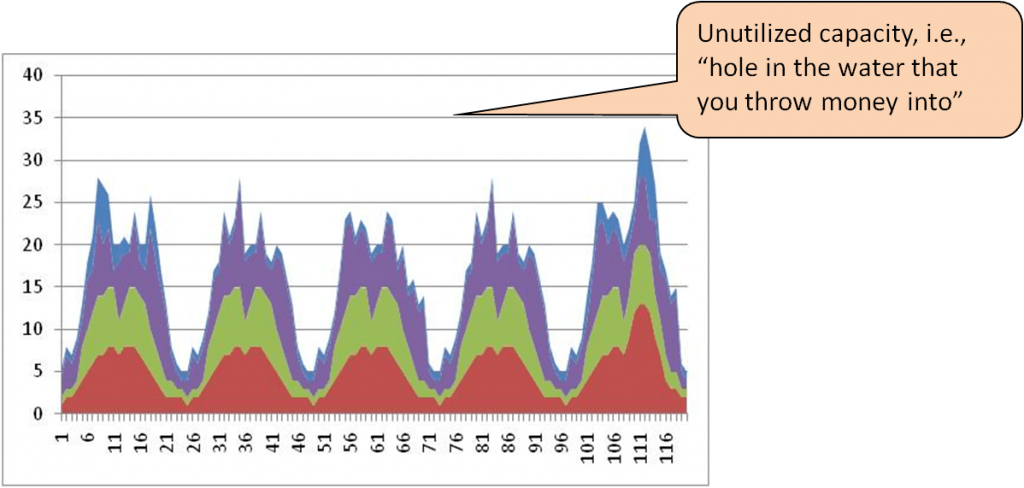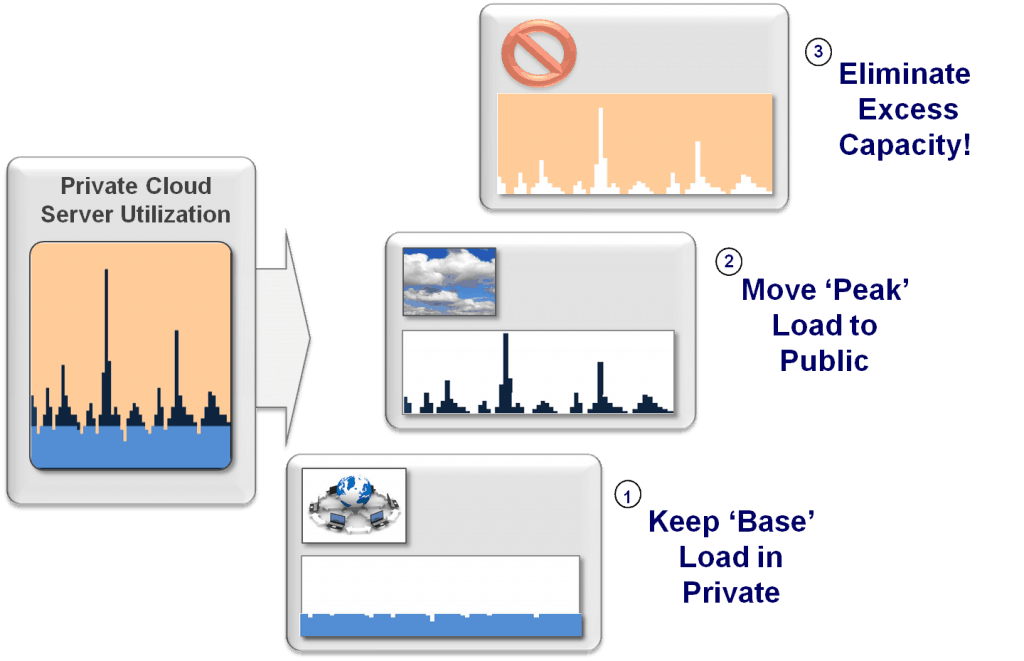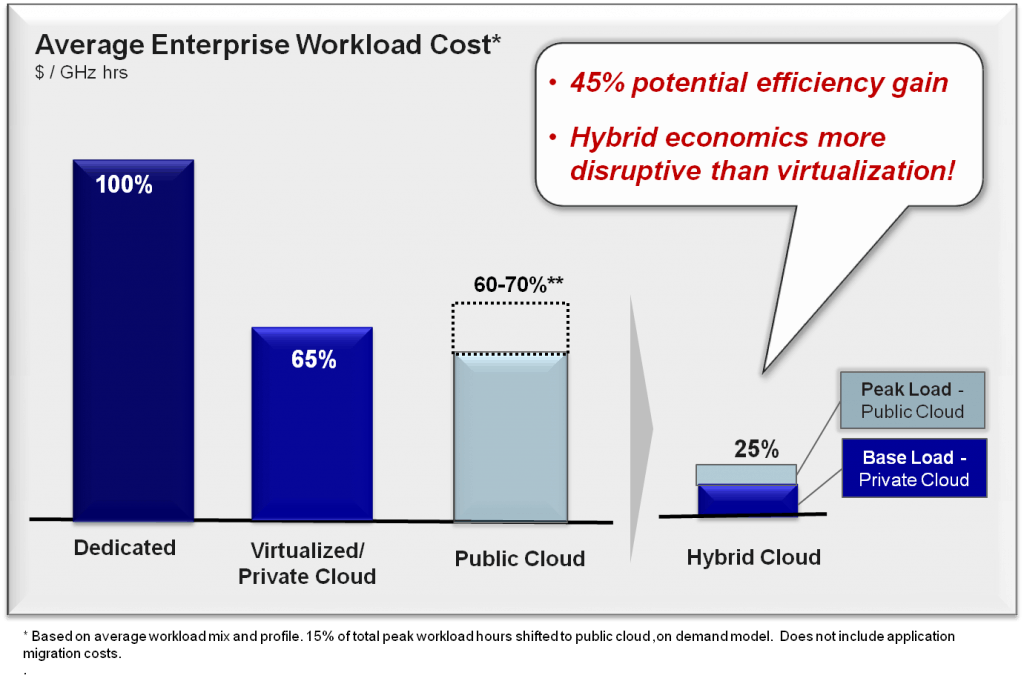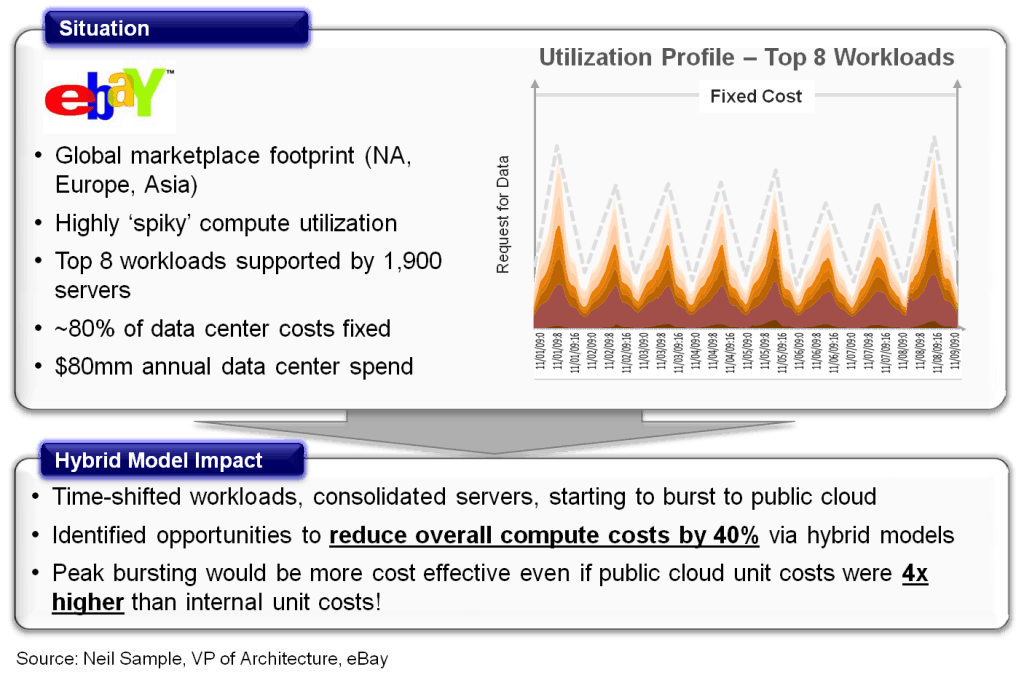
Have you ever stopped to think why cloud computing is at the center of any IT-related discussion? In our conversations with clients, from the boardroom to the line manager, cloud is sure to enter into the discussion. Today, many of those conversations are around understanding, and to a lesser degree, implementation. But once the discussion crosses the threshold of understanding, the topic immediately goes to, “How can I get into the cloud?”
Everest Group recently held a webinar on the economics of cloud computing. There were two objectives: 1) Help clarify just how disruptive, in a good way, cloud computing is and can be; and 2) Demonstrate the economic benefits that exist in the cloud economy, and that there are those striving for this competitive advantage today.
The Hole in the Water That You Throw Money Into
One of the key economic drivers that hampers today’s data center environment is the relatively low utilization rate across its resources. Think about it like this: You’ve probably heard the old adage that owning a boat is like having a hole in the water that you throw money into. That is because the majority of boats are seldom used. (Trust me, I know, I used to own one.) The per use cost of a $25,000 (and quickly depreciating) boat that you actually use three or four times a year is quite high, and the reality is you could have rented a boat often for a fraction of the cost. The same thing is happening in your data center. If your utilization is 20 percent, or even 30 percent, you have essentially wasted 70-80 percent of your spend. That is an expensive data center.
Cloud computing is like that little boat rental shop tucked away in a nice cove on your favorite lake. What if you could get rid of excess capacity, better manage resource peaks and valleys, and rent public capacity when you need it, and not pay for it when you don’t?
The Economics
As you can see in the graphic below, the economics related to cloud are dramatic, and the key lies in leveraging the public cloud to pay only for what you use, eliminating the issue of excess capacity.
There is a variety of point examples in which this is done today, with the above economics reaped. For instance, Ticket Master leverages the public cloud for large events, loading an environment to the cloud, specifically sized for each given event. The specific event may only last several hours or days, and once complete, Ticket Master takes down the environment and loads the data in its dedicated systems.
There are also enterprises and suppliers working to enable peak bursting more seamlessly. For example, eBay recently showed where they are working with Rackspace and Microsoft Azure to enable hybrid cloud bursting, allowing eBay to reduce its steady state environment (think hole in the water) from 1,900 to 800 servers, saving it $1.1 million per month.
The Steps to Getting Started
Dedicate yourself to getting rid of your boat (or should I say boat anchor?) Begin a portfolio assessment. Understand what you have, and what is driving utilization. Consolidate applications, offload non-critical usage to the valleys, and look for ways to leverage the public/private cloud. When I unloaded my boat, I freed up capital for the more important things in life, without sacrificing my enjoyment. Doing so in your data center will allow you to take on strategic initiatives that will make you even more competitive.








